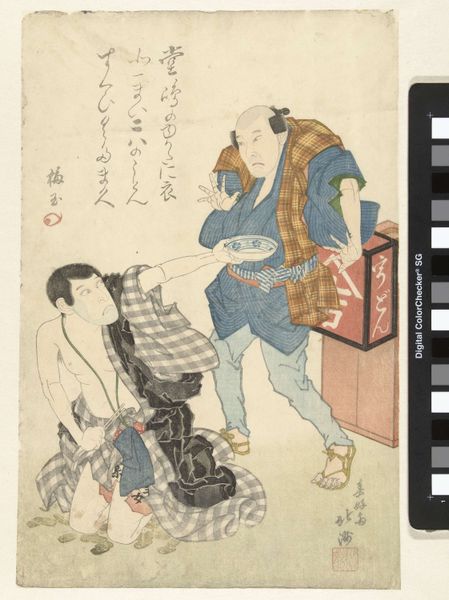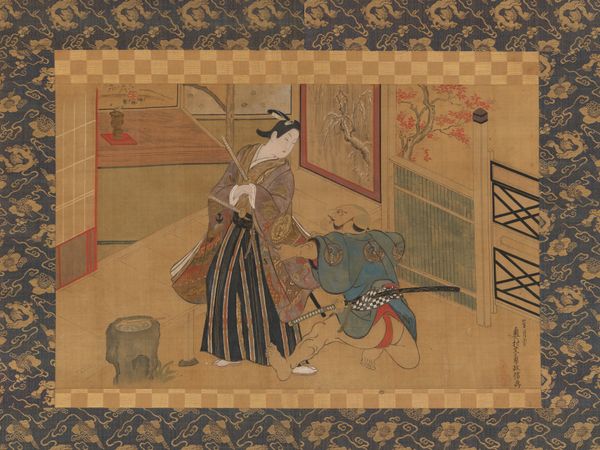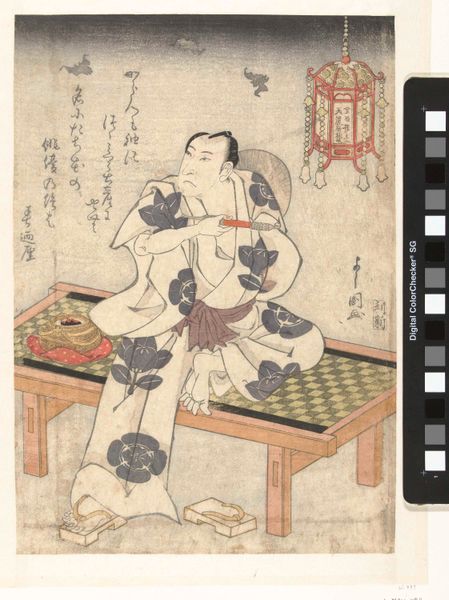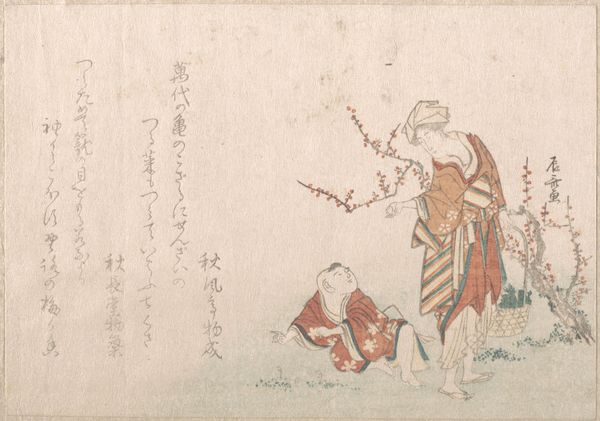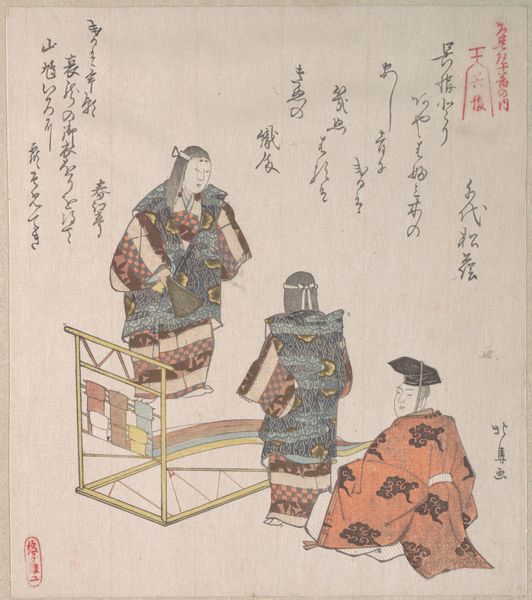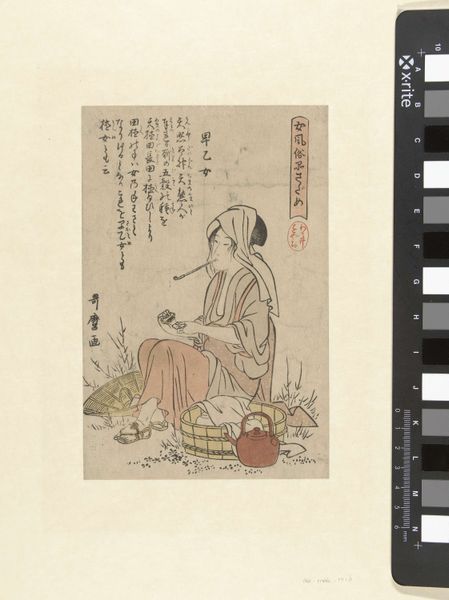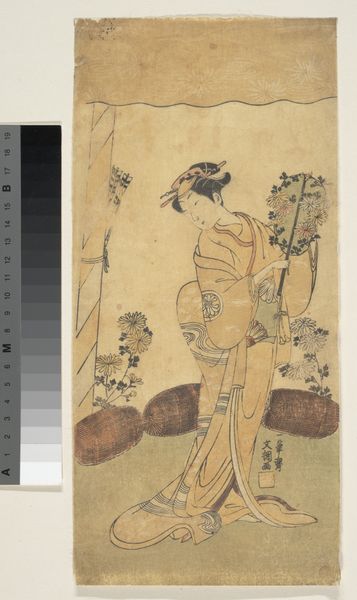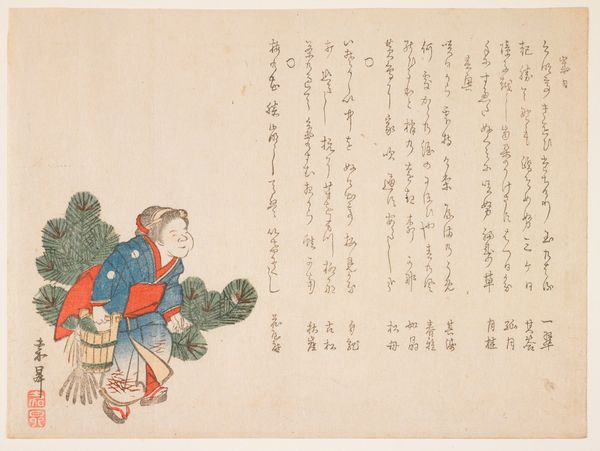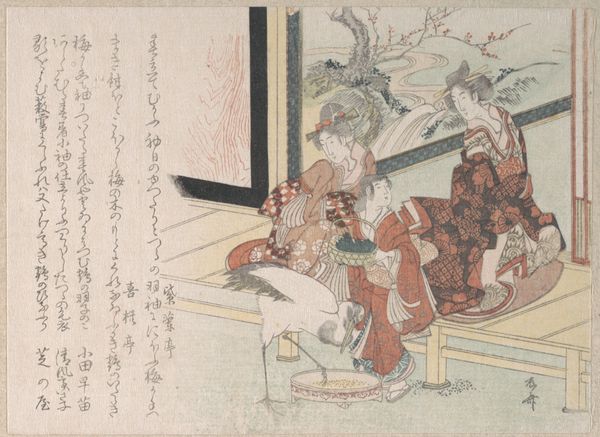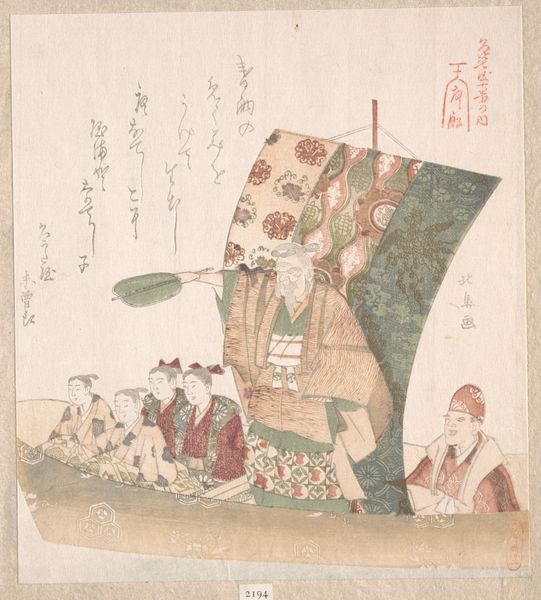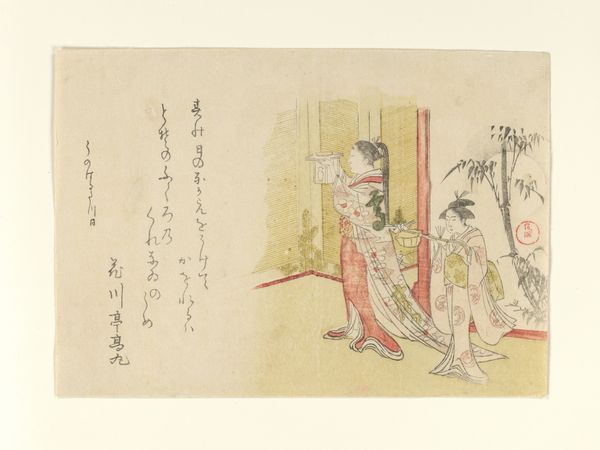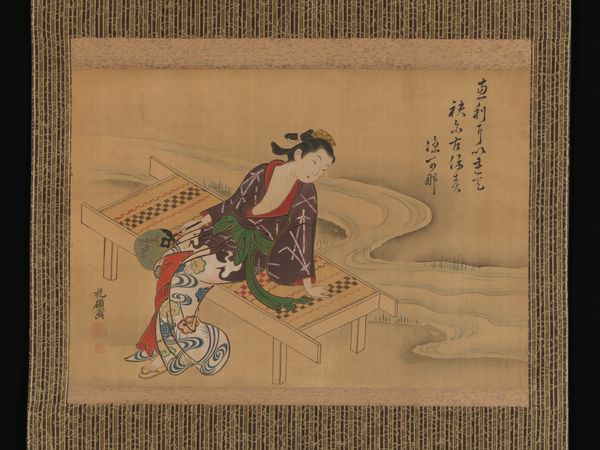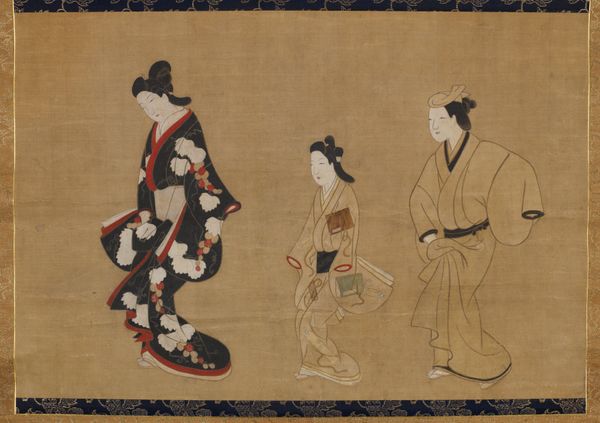
print, paper, ink, woodblock-print
#
aged paper
#
quirky sketch
# print
#
asian-art
#
sketch book
#
ukiyo-e
#
figuration
#
paper
#
personal sketchbook
#
ink
#
sketchwork
#
woodblock-print
#
visual diary
#
ink colored
#
sketchbook drawing
#
genre-painting
#
storyboard and sketchbook work
#
sketchbook art
Dimensions: height 142 mm, width 120 mm
Copyright: Rijks Museum: Open Domain
Curator: Let’s discuss this print titled “Twee jongens met hond,” or "Two Boys with a Dog," made around 1790 by Utagawa Toyokuni I, currently held in the Rijksmuseum. What's your immediate response? Editor: I find it oddly endearing, though there’s a prevailing sense of subdued social control—not overt, but certainly implied through dress, leash, and staging in this woodblock print. Curator: Focusing on formal elements, I’m struck by how the artist utilizes line and space to create depth. Notice how the delicate lines of the bamboo contrast with the patterned kimonos. The perspective directs the eye subtly, creating focus in an uncluttered field. Editor: But those patterns aren’t just decoration. The clothing indicates socioeconomic status within the rigid Edo period. Consider too the leashed dog. Not necessarily a “pet” in the modern sense but a mark of privilege displayed in public. It reflects how class dictated visual representation. Curator: Perhaps. I'm fascinated with the relationship of negative to positive space, typical of Ukiyo-e prints. The blankness makes one contemplate balance and the suggestion of environment. Observe, how light these figures stand against a vast background. Editor: That “blankness” highlights power dynamics. The boys, dressed and positioned just so, represent the structured expectations put upon them, part of a generation under strict authority. The print visualizes conformity. Curator: Is the print not able to depict simply, shall we say, daily life? Are we doomed to always read the artwork’s political stance, without some consideration for a casual scene? Editor: “Casual” only exists within a context, though. To overlook how dress, leisure, even companionship like that dog were shaped by sociopolitical conditions would mean missing what the print subtly communicates. Curator: Well, I appreciate the image's refined craftsmanship, even if I cannot commit to reading the artwork to mean more than what the artist literally presented on the paper: a genre painting. Editor: Then let us agree to disagree, in terms of context, yet value, in equal measure, this delicate intersection of aesthetics and implicit power as it appears here in this scene.
Comments
No comments
Be the first to comment and join the conversation on the ultimate creative platform.
